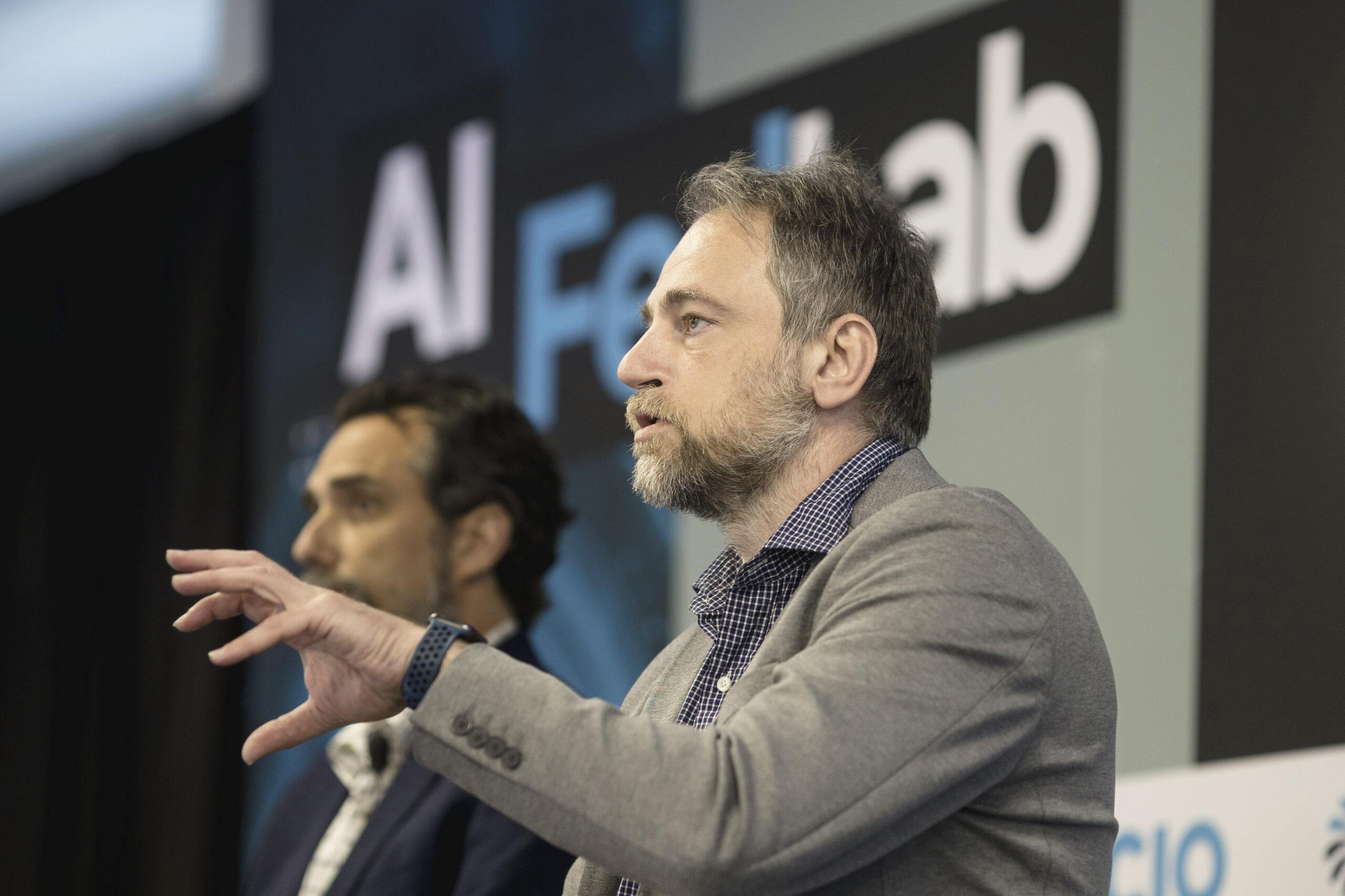AI Development is the ‘Modern-Day Arms Race,’ DIU Says
Agencies are developing strategies to overcome workforce barriers and accelerate AI adoption to remain competitive in the future battlefield.

AI development is a “modern-day arms race” due to its capability to be a force multiplier on and off the battlefield, Defense Innovation Unit’s (DIU) AI/ML Program Manager Jamie Fitzgibbon said at the GovCIO Media & Research AI Summit on Nov. 7.
“The first one to finish gets to write the rules. It behooves us to do it responsibly, but to move fast,” Fitzgibbon added.
While technology is important, workforce training and adoption are most critical to the development and usage of AI on the battlefield.
“It’s not the technology that’s causing us to slow down and not be as much ahead as our potential near peer competitors and adversaries.,” Fitzgibbon said. “We’ve got to get people to embrace this. It’s also our acquisition cycle, our funding cycle, the stuff that has nothing to do with technology, but is 100% going to allow us to either accelerate or put on the brakes.”
Amanda Bullock, AI lead at the Air Force Research Laboratory (AFRL), said that it is critical to connect with people on an emotional level and understand where their concerns or challenges are with adopting AI, allowing them to find comfort with tools at their own pace.
“It’s really important to meet people wherever they are in that spectrum of their feelings and their emotions. It’s also really important to provide a different avenue of training, whether that’s through hands-on training [or] virtual training. Sometimes people just want to do it [by] self learning,” Bullock said.
Bullock pointed to the AFRL’s NIPRGPT program, launched earlier this year, which is designed to give employees a sandbox to experiment, learn and play with generative AI in a safe and secure environment.
Bullock said that the hope remains that commercial capabilities will eventually surpass NIPRGPT, but that the tool exists and has garnered excitement within the AFRL because it allows employees to get a hands-on experience with an emerging tool.
Kanuj Behl, field CTO and cloud transformation architect at Nutanix Federal, said that AI applications need to be targeted and catered to solving specific problems to truly be effective.
“You can’t have one ring to rule them all because one type of AI does not solve every kind of problem,” Behl said. “If it’s meant to do one thing, and you’re asking it to do something else, you’re going to get a garbage answer. You need to make sure that you have the right tool and it’s there to solve that time.”
Bullock said hesitancy remains with AI adoption primarily because of culture and fear that the technology will replace jobs, but Fitzgibbon said honing in on messaging can help reshape narratives around the potential of AI.
“We’re talking about machines, we’re talking about hardware, software, processors, all these things that go into AI, but it is built by humans for humans,” Fitzgibbon said. “If this algorithm is doing something that seems wonky – you might not be a data scientist, you might not be a software engineer – but you absolutely have a right to speak up and say this doesn’t look right because it is supposed to help you do your job.”
This is a carousel with manually rotating slides. Use Next and Previous buttons to navigate or jump to a slide with the slide dots
-

DOE Accelerates AI Research to Defend Critical Infrastructure
The Energy Department and its national labs are increasing partnerships to advance AI research, scale new tools and boost national security.
3m read -

AI Revolutionizes Defense Decision-Making
AI enhances access to vital information for defense leaders, empowering faster, more informed decision-making on and off the battlefield.
29m watch -

Opinion: AI Is Reshaping Government, Can Contractors Keep Up?
To compete in the new AI-driven public sector, contractors must demonstrate the one thing machines can’t deliver: human originality.
4m read -

CISA's CVE Program and Why it Matters for Zero Trust
The vulnerability program provides the cybersecurity community visibility into software as part of a key pillar of CISA's zero trust model.
5m read








